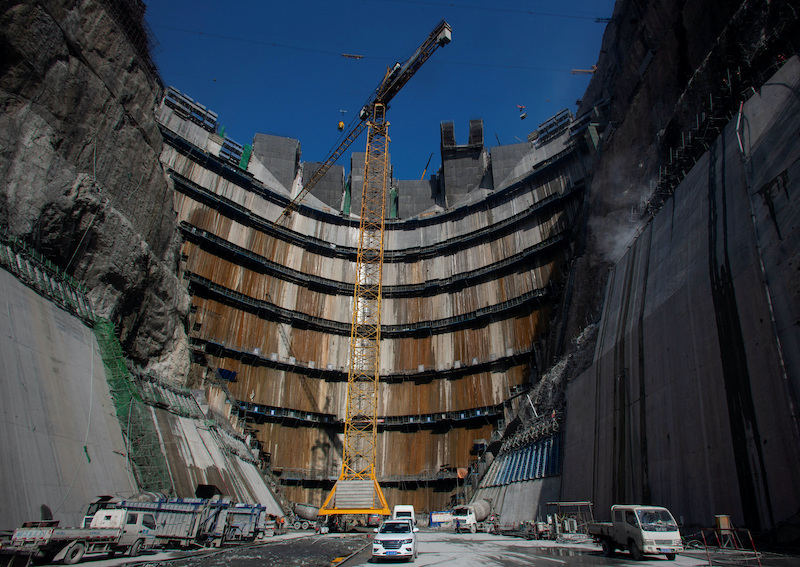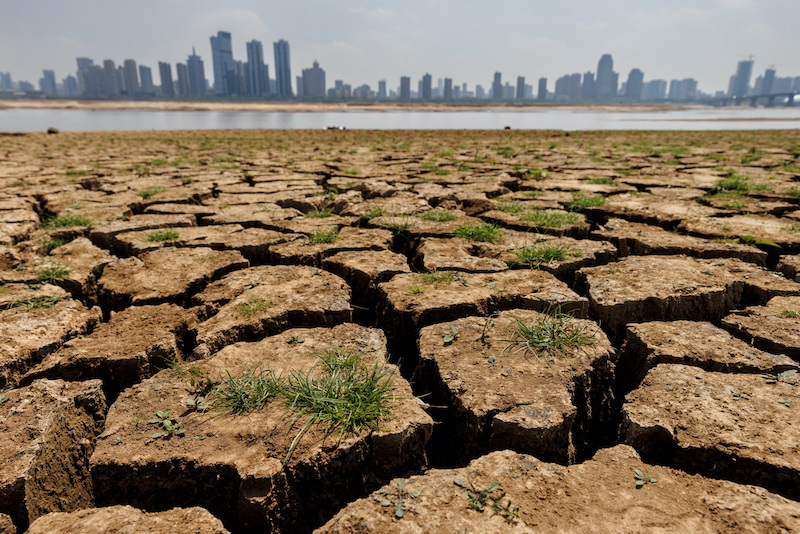Chinese provinces are planning to spend vast sums – nearly a quarter of a trillion dollars in all – on new water infrastructure projects to try to counter the growing impact of extreme weather.
A record heatwave that dried up dozens of rivers in the country’s southwest and along the Yangtze basin exposed the vulnerability of hydropower-dependent regions such as Sichuan to falling water levels and disrupted electricity transmission to other parts of the country.
With per capita water supplies already only a quarter of the global average, authorities are concerned about the impact of low rainfall on the upcoming autumn harvest, with some suggesting 20% of China‘s crop could be affected.
Drought-hit regions have been digging emergency wells and deploying firefighters and cloud-seeding rockets to irrigate crops, but governments are also turning to larger, long-term water infrastructure.
“Because of the strong extremes, and the worsening of both floods and droughts, the ability to store and transfer water becomes very important,” Mao Liuxi, an expert with the China Meteorological Administration, told a recent teleconference.
The Ministry of Water Resources has already approved 25 big projects this year, with total investment of 1.7 trillion yuan – $246 billion.
Central China‘s Hubei province, hit hard by the Yangtze drought, began construction of 18 giant water projects on Wednesday, and plans to spend 176 billion yuan from 2021-2025.
Last month, southwest China‘s Yunnan also began work on four big water storage projects with a combined investment of 211.8 billion yuan.
ALSO SEE: China’s Farmers, Factory Owners Battle Heatwave, Power Cuts
China has long relied on large-scale infrastructure projects to control its rivers. The giant Three Gorges Dam was designed not only to generate electricity but also to regulate the flow of the Yangtze, on which around a third of the population depends.
China has also been building the ambitious South-North Water Diversion Project, with channels now in place in eastern and central China to use Yangtze waters to replenish the arid north.
“There’s a mentality that there’s always an engineering, infrastructure solution,” David Shankman, a geographer with the University of Alabama who studies China‘s water system, said.
“They are trying to plan for the exceptional, but you can’t predict the future.”

Damming the Yangtze
With around 80% of Sichuan’s energy supplies coming from hydropower, the drought forced authorities to shut down industries and ration power for households.
In response, China‘s energy bureau said it would build more grid infrastructure and develop alternative energy sources. It also vowed to speed up the construction of more dams on the Yangtze’s upper reaches.
In theory, the construction of more upstream hydropower plants, particularly in parts of Tibet where melting ice in spring and summer could be diverted into reservoirs, could help even out seasonal water flow changes.
China already stores huge amounts of water in its giant reservoirs, and says they serve an important function in limiting flood damage during rainy seasons.
But critics say the projects are costly, environmentally damaging and remain at the mercy of unpredictable weather. And citizens in countries downstream in Southeast Asia who live adjacent to major rivers such as the Mekong and Ayeyarwady (Irrawaddy) have bitterly opposed Chinese dams and the impacts they have had river flows.
“If you’re anticipating droughts, you want to have the highest water capacity, but in anticipation of severe floods, you want to have the lowest water level you can have,” said Shankman, adding the situation is further complicated by the need to retain enough water to generate electricity.
Zhou Jinfeng, secretary of the China Biodiversity Conservation and Green Development Foundation (CBCGF), says the construction of giant water projects has already severely disrupted the Yangtze’s natural habitats and hydrological functions.
“Water engineering projects are neither the best solution, nor the only solution,” he said.
- Reuters with additional editing by Jim Pollard
ALSO SEE:
China Plans Mammoth Tunnel To Ship Water to Beijing – SCMP
China Shuts Factories in Sichuan Amid Worst Heatwave Since 1961
China Seeks Better Adaptation to Climate Change As Risks Rise
China Frets on Cost of Climate Change
























